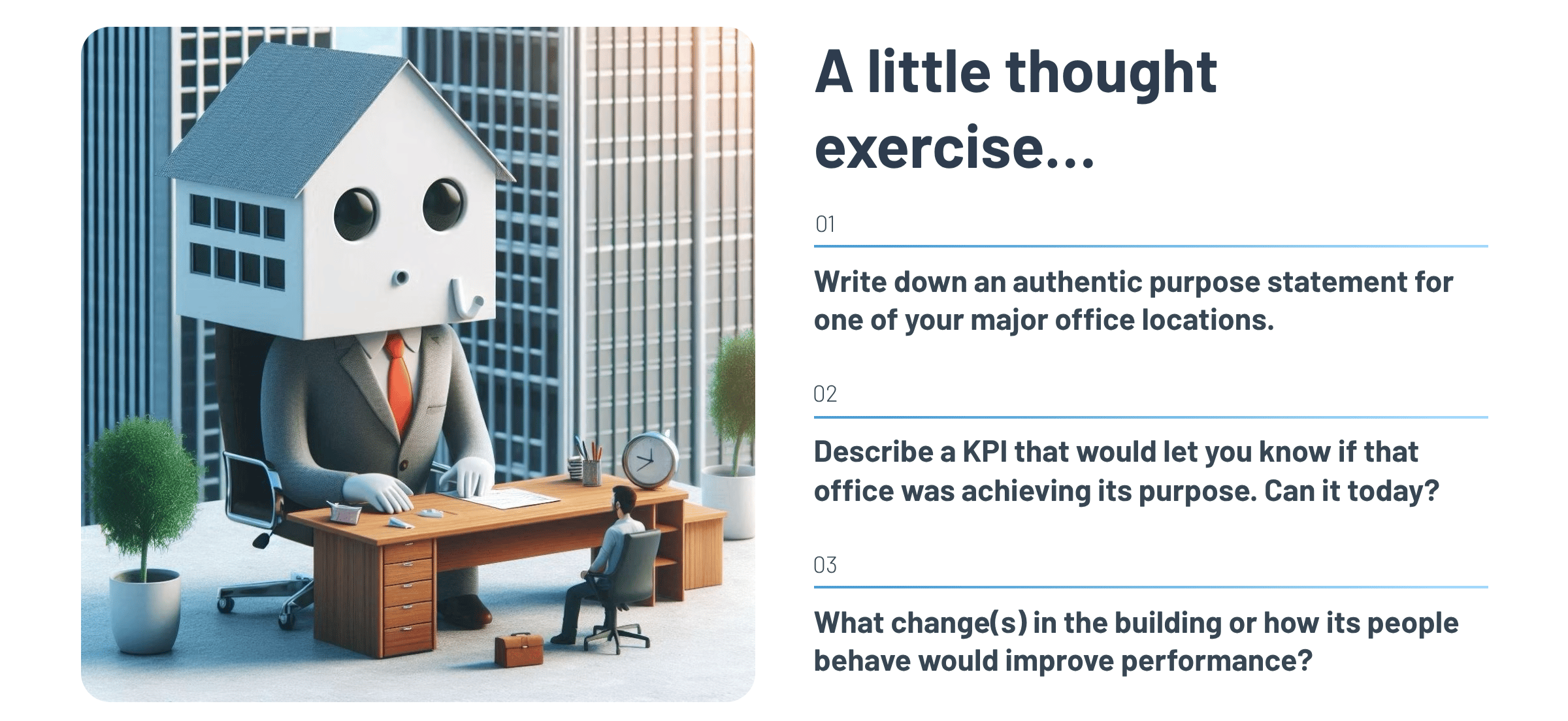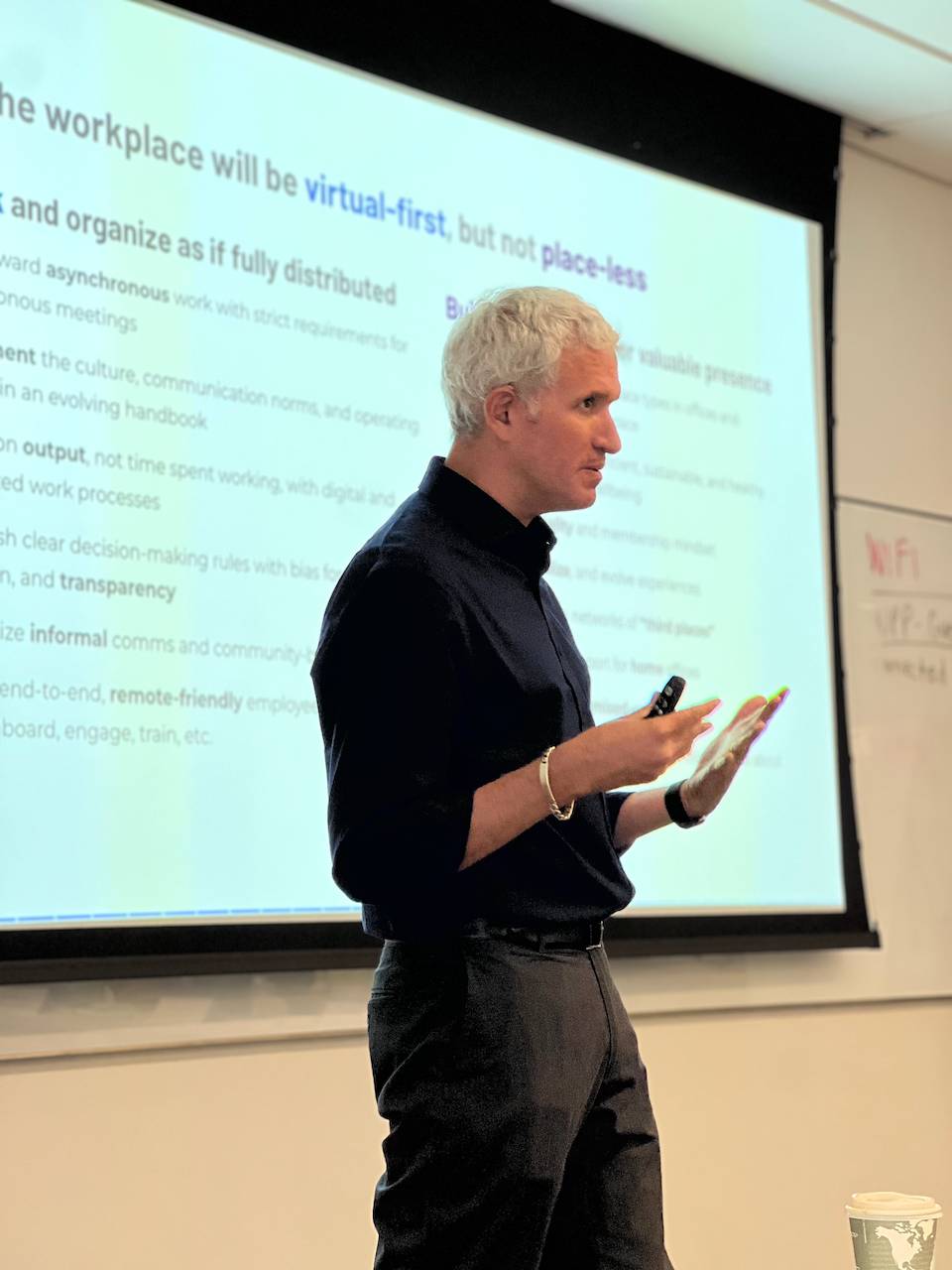3 Levers for HR to Mitigate the Mandate

I asked the room to move.
It was graduation week at Modern Executive Solutions’ CHRO Academy, a nine-month program for senior HR leaders at large companies, deemed "ready next" and sponsored to participate by their executives.
My session: "A New North Star for Work(place) Experience: Your guide to ignoring headlines about RTO and hybrid."

These HR leaders can ignore external noise, like RTO announcements and coffee-badging trends, but they can't avoid internal resistance when their own CEO makes a similar call.
So we started with a "constellation" exercise.
I made statements about workplace experience, such as “When employees are asked to be on-site, there's a good reason.”
Participants moved towards me if they agreed, farther away if they didn't. Modern’s coaches were right next to me, leaders with frontline workforces were towards the back, with the majority floating in the hybrid middle.

Then I rephrased: "What about you personally? Not your employees—do you have freedom to choose where you work?" A handful stepped closer.
One leader explained the shift:
We say we trust our people, and I do have more autonomy than most, but we still believe our leaders should be onsite and visible.
That subtle gap between offering and expecting flexibility became a foundation for discussions. Many rising CHROs are accountable for culture, engagement, and employee experience but may not decide where or when people work.
Optimizing the Hand You're Dealt
Most of the program participants find it challenging that decisions about on-site presence are largely outside of their control.
CEOs still make most of the calls about RTO policies. HR leaders must then handle resistance from workers and managers, such as coordination headaches, attrition risks, and leadership development requirements.
I often work with executives from one part of the "Chief of Work" trio who must lead through structural limitations. Recently, it was real estate heads navigating inconsistent reporting lines. This day it was rising CHROs navigating their CEO’s policies.
But constraints can be catalysts.
The razor-sharp participants weren't deflated by this limitation; they were energized by it. If you can't stop the mandate, what can you control?
By the end of the session, we had covered three levers.
Lead Across the Lines of Modern Work with Phil Kirschner
Over 22,000 professionals follow my insights on LinkedIn.
Join them and get my best advice straight to your inbox.
1. Places Need a Purpose
The modern office cannot just be a container for workers; it must be a signal of what an organization values. Too many companies still say their offices are generically for collaboration or connection without authentic language or a clue how to prove it’s working.

Some participants shared excellent examples of where site-level decisions were aligned with business and social goals, e.g.:
- A staffing company put a branch office inside a large retail store, making it more convenient to reach and engage job seekers
- A bank built a new headquarters "on the wrong side of the river" to spark economic development in an underserved neighborhood
HR leaders may not be able to set presence policies, but they can narrow and clarify the purpose of the office to inform how it’s designed, activated, and evaluated.
An office trying to be everything for everyone ends up only moderately good at most things for most people.
The Desk-Sharing Debate
Nothing I said about offices evoked more emotion than desk sharing, as participants said removing dedicated space erodes recognition. When budgets limit rewards, a private office is a tangible symbol of seniority.
But if work is becoming more fluid, with skills-based projects replacing fixed roles, the workplace has to move too. That means designing for mobility and sharing, not for cost efficiency, but for business and social capital opportunity.
I know this is possible from my practitioner workplace experience.

A culture of workplace mobility signals three things:
- You're defined by skills, not your seat
- You're encouraged to explore and engage where you add value
- You can move physically and organizationally without friction
The old logic of assigned seating was about control. The new logic is about access and velocity—how quickly people find each other, form teams, and ship ideas. Companies building for that kind of movement curate employee journeys as infrastructure for growth.
2. How We Work Makes Hybrid Hard
I shared an iceberg visualization to outline the various reasons my clients have articulated why it’s hard dealing with hybrid work realities, saying that not every company is honest about the stress they are encountering.

The top levels were common frustrations: scheduling conflicts, unclear policies, leaders struggling to manage remotely. Below the surface are structural issues: old or toxic processes, decision rights, and norms.
That realization reframed hybrid headaches not as a location problem but as a systems problem, which HR may be uniquely positioned to solve.
Culture of Writing Things Down
Managers translate top-down policies into lived experience. The most critical, yet under-appreciated practice? Knowledge sharing.
My research using McKinsey's Organizational Health Index found that knowledge sharing is the infrastructure that makes everything else work. When information lives in people's heads, coordination fails. When documented and searchable, culture becomes teachable.

Equip managers to create explicit agreements about when, where, and how teams collaborate. Not vague principles, but documented norms. And when those norms are clear, status flows through trust and transparency, not physical territory.
3. Cross-Functional Collaboration
Many corporate real estate teams are struggling with their identity and perceived value. Approximately one-third report through HR, but are never treated as an HR function. As Brian Elliott recently wrote for Work Forward, CRE is the the "missing leg" of employee experience, excluded from the very conversations where they could add the most value.
The frustration runs both ways: real estate teams want to design better experiences but lack the data to do it well. They showcase new offices as magnets for talent, but rarely have access to demographics, attrition rates, engagement scores, or team structures.
All of that sits with HR.

Sharing that data creates a shared truth about who the workplace is for. It elevates HR from "people advocates" to experience architects working alongside IT and CRE to deliver measurable outcomes.
The North Star Advantage
When these functions align around a single ”North Star” vision decisions about space, tech, and policy become coherent instead of competing.
That guide should answer four questions:
- Where are we going? (vision)
- Why is this changing? (rationale)
- What does success look like? (outcomes)
- Who is collaborating to get there? (roles)
Without it, each function optimizes its own corner of the employee experience: HR for culture, IT for tools, CRE for space. With it, they design an operating model for work that actually works.
What CHROs Should Do Now
The Modern CHRO Academy exists to prepare leaders for disruption and leading when the rules aren’t yours to set.
The next generation of CHROs will embody a Chief of Work mentality and build connective tissue between strategy, systems, and space.
This starts with three habits:
- Translate vision into experience. Treat the workplace as a product with users, outcomes, and iteration cycles.
- Normalize clarity. Help managers document team operations the same way engineers document code: visible, versioned, shared.
- Trade control for connection. Build trust across HR, IT, and CRE through shared data and wins.
When these habits take root, HR can stop enforcing mandates and start designing meaning.
Leading Without Control
You may not decide how many days people come in, but you absolutely influence what those days mean.
The constellation exercise made that visible: flexibility feels different depending on power, visibility, and trust. HR’s role is to make them explicit and fair through intentional design.
Because in the end, leadership without control isn’t a constraint.It’s the new definition of authority.

Special thanks to Stephanie Smallets at Modern Executive Solutions for the opportunity to work with this exceptional cohort, and to the academy coaches and leaders for such an energized conversation. If you are interested in sponsoring a participant, please email communities@modernexec.com.

Lead Across the Lines of Modern Work with Phil Kirschner
Over 22,000 professionals follow my insights on LinkedIn.
Join them and get my best advice straight to your inbox.

